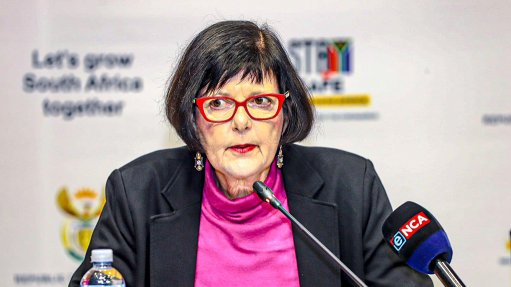Rain-fed agriculture emissions research shows climate-smart interventions can help
Preliminary findings of a two-year study from the University of the Free State (UFS) Kenilworth Experimental Farm indicate that climate-smart agriculture interventions, such as legume rotation and no-till practices, have the potential to reduce the intensity of greenhouse-gas (GHG) emissions, particularly highly radiative gases like nitrous oxide (N2O).
The current project of UFS Department of Soil, Crop and Climate Sciences lecturer and researcher Dr Jerry Dlamini focuses on investigating the impact of various conservation agriculture interventions on GHG emissions, primarily targeting N2O, methane, and carbon dioxide (CO2).
“This is significant, as N2O has a global warming potential 100 times greater than CO2 over a 100-year horizon, meaning its impact on ozone depletion persists far longer despite being emitted in smaller quantities,” he explained.
In South Africa, rainfed agriculture is vital in food production, contributing substantially to the nation's agricultural output.
However, this sector also stands as a notable contributor to GHG emissions, primarily through activities such as livestock farming, fertiliser use and changes in land use.
This two-year project, from December 2022 to December 2024, is a collaborative effort between European and African universities and institutions, including Rothamsted Research in the UK, University College Dublin in Ireland, University of Nottingham in the UK, University of Poznan in Poland, the British Geological Surveys, the University of Zambia, the University of Zimbabwe, and the Lilongwe University of Agriculture and Natural Resources in Malawi.
The project is funded by the European Joint Programme and has a budget of R22-million.
GHG emissions represent a significant global concern, as they drive climate change. This concern is particularly pronounced in rain-fed agriculture, where understanding and addressing these emissions are crucial for ensuring sustainable agricultural practices, Dlamini said.
He is advocating for increased research efforts to quantify GHG emissions from South African croplands.
“Field-based measurements, similar to methodologies employed by other nations, are important to enhance the accuracy and effectiveness of South Africa's GHG inventories submitted annually to the United Nations Framework Convention on Climate Change, and to devise effective mitigation strategies,” he emphasised.
Comments
Announcements
What's On
Subscribe to improve your user experience...
Option 1 (equivalent of R125 a month):
Receive a weekly copy of Creamer Media's Engineering News & Mining Weekly magazine
(print copy for those in South Africa and e-magazine for those outside of South Africa)
Receive daily email newsletters
Access to full search results
Access archive of magazine back copies
Access to Projects in Progress
Access to ONE Research Report of your choice in PDF format
Option 2 (equivalent of R375 a month):
All benefits from Option 1
PLUS
Access to Creamer Media's Research Channel Africa for ALL Research Reports, in PDF format, on various industrial and mining sectors
including Electricity; Water; Energy Transition; Hydrogen; Roads, Rail and Ports; Coal; Gold; Platinum; Battery Metals; etc.
Already a subscriber?
Forgotten your password?
Receive weekly copy of Creamer Media's Engineering News & Mining Weekly magazine (print copy for those in South Africa and e-magazine for those outside of South Africa)
➕
Recieve daily email newsletters
➕
Access to full search results
➕
Access archive of magazine back copies
➕
Access to Projects in Progress
➕
Access to ONE Research Report of your choice in PDF format
RESEARCH CHANNEL AFRICA
R4500 (equivalent of R375 a month)
SUBSCRIBEAll benefits from Option 1
➕
Access to Creamer Media's Research Channel Africa for ALL Research Reports on various industrial and mining sectors, in PDF format, including on:
Electricity
➕
Water
➕
Energy Transition
➕
Hydrogen
➕
Roads, Rail and Ports
➕
Coal
➕
Gold
➕
Platinum
➕
Battery Metals
➕
etc.
Receive all benefits from Option 1 or Option 2 delivered to numerous people at your company
➕
Multiple User names and Passwords for simultaneous log-ins
➕
Intranet integration access to all in your organisation




















